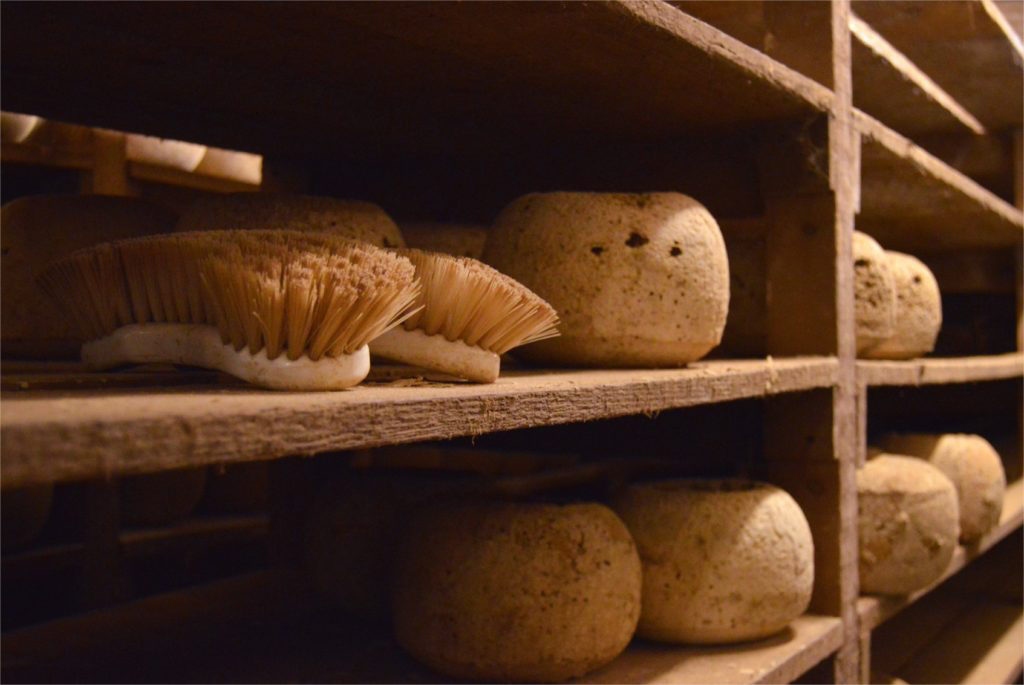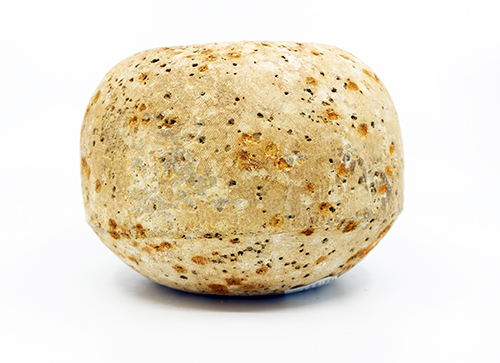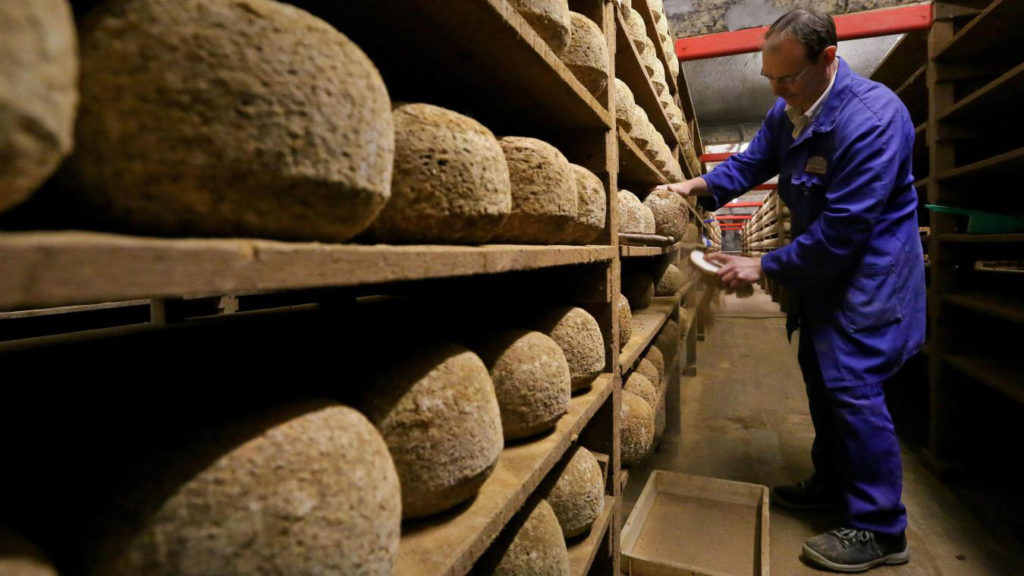In the heart of the basements of a former textile factory located in Roubaix, the Losfeld family have been refining Northern cheeses since 1871.

The family business was created by Sophie-Adelaide Losfeld who had the idea of buying cheese from the local markets to sell on to the Roubaisian and Tourquennoise bourgeoisie. As demand grew, Sophies husband Caesar began to work alongside her, a collaboration know today as Cesar Losfeld.
Every day, mimolettes and cheeses “Saveurs en’Or” such as the Giant of Flanders, the Pavé du Nord and the Petit Caesar are pampered and brushed in the cellars of Mouvaux. As they mature the cellar master hits each wheel of Mimolette with a hardwood mallet to determine its quality and to check that it contains no cracks or openings. It is the job of the cellar master to determine at what stage each wheel is marketed.
There are typically three stages Mimolette is sold at, demi-vielle which is “half old” or around six months, vielle which is “old” and about a year aged, and tres-vielle or “very old” at 18 months.
An important component of Mimolette’s development during affinage is the use of microscopic cheese mites. These “little affineurs”, create tiny holes essential to the cheese’s ripening and development. Caring for Mimolette includes the regulation of mite colonies to ensure the cheese matures properly. At Cesar Losfeld the cellars are at constant temperature with no air flow with regulated controlled humidity.
The cheeses selected by Calendar Cheese are made by the Isigny St Mere co-operative and are matured for up to two years.
What Are Cheese Mites?
Microscopic Arachnids or Cheese Mites tend to be present on the outside of hard cheeses, such as Cheddar and Mimolette. Some French nickname them ‘artisans’, the little artisans that only select the best and oldest cheese to dine on. They love to feast on old, hard cheeses and enjoy the humid and warm conditions of which the cheeses are stored. A few mites living on the surface of a cheese will not cause problems for cheese producers but for some can reek havoc. Quicke’s have said to have lost over $250k a year due to mite damage. Many producers can control mites by brushing them off the surface of the cheese or blasting them at high pressure with vacuums.




